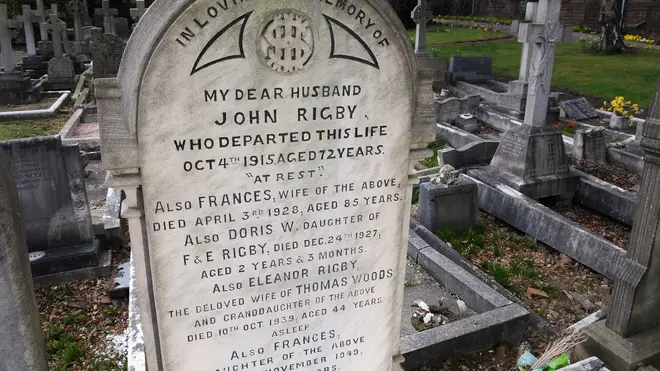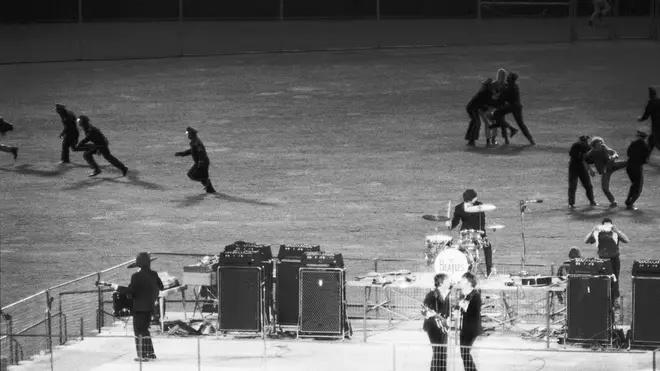On Air Now
Ed Gamble & Matthew Crosby 8am - 11am
5 August 2024, 10:40

Many claim it’s the Beatles’ masterpiece. Liam Gallagher says his proposed album with John Squire will be as good as this one. But how much do you know about this rather excellent LP from 1966?

Klaus Voormann, a friend of The Beatles from their days in Hamburg at the beginning of the 1960s drew the cover art and put together the collage. Klaus studied art, but had recently moved to the UK to take up a career in music, playing bass with the group Manfred Mann. He created the collage out of a number of photos of the band (some of which appear on the back cover of the previous album, Rubber Soul) and Klaus himself appears on the front cover, just underneath the drawing of John’s mouth.

The song was originally drafted as “Miss Daisy Hawkins”, but Macca changed the name to fit the syllables. The “Eleanor” probably came from actress and comedienne Eleanor Bron, who starred in the Fabs’ film Help! Strangely, however, there’s an Eleanor Rigby buried near Paul’s former home in Woolton, in Liverpool, who died in 1939. WEIRD.

Well… yeah. Paul McCartney was always cagey about it, but later admitted that it was “an ode to pot”. In the book Many Years From Now, Macca confessed: “I’d been a rather straight working-class lad but when we started to get into pot it seemed to me to be quite uplifting... Got To Get You Into My Life is really a song about that, it's not to a person, it's actually about pot. It's saying, I'm going to do this. This is not a bad idea.”
This one is definitely about drugs, too. LSD, to be precise. The words concern psychedelic guru Timothy Leary’s English interpretation of the Tibetan Book Of The Dead, which gives instructions on how a spirit goes through into the “next world”. Leary was an advocate of LSD and his book The Psychedelic Experience was an attempt to guide acid-heads through their use of the often-unpredictable drug. Lennon recorded himself reading the instructions onto tape and played it back as began his trip.

There are lots of theories on who this magical pill-dispensing shaman was, but the most likely is Dr Robert Freymann, a New York physician noted for reportedly offering Vitamin B-12 shots, laced with amphetamines to his wealthy clients. He lost his license in 1975 and died in 1987, leaving behind a book called “What’s So Bad About Feeling Good?”

Doctor Robert (Remastered 2009)
Peter Fonda. Jane’s brother had just starred in a biker movie called The Wild Angels and upset Lennon during a pleasant acid trip by relating the tale of when he accidentally shot himself in the stomach when he was 11. His phrase “I know what it’s like to be dead” found its way into a Beatles song… while a sample of Fonda in The Wild Angels was used to kick off The Scream’s classic 1990 track: “We wanna be free to do what we want to do!”

The Wild Angels (1966) - Loaded
They played their summer 1966 single Paperback Writer, on their last tour, but after three solid years of Beatlemania, the band had become bored and disillusioned with not being heard by the screaming fans, and were happy to play their usual collection of crowd-pleasers. The Revolver songs were simply too complex, with too many overdubs and extra instrumentation to be played live, not to mention the rubbish amplification used in those days.

The US version of the album misses off three tracks: I’m Only Sleeping, And Your Bird Can Sing and Doctor Robert. Back in the 1960s, the US label Capitol would try and eke out more LPs from the Fab Four catalogue, so these three tunes were collected on an album called Yesterday And Today, which also included bits of Help! and Rubber Soul. The Beatles were not happy and this was the last album to be treated this way.


Tomorrow Never Knows (Remastered 2009)
It’s Paul McCartney, laughing. Or pretending to laugh. The sound was a tape loop that was sped up and distorted, then mixed into the final track.

04 - The Beatles - Tomorrow Never Knows (Tape Loops)
It’s a pun on the way an LP revolves at 33-and-a-third revolutions a minute. However, the name was a work of desperation as it was ALMOST called “Beatles On Safari” or “Abracadabra”. Luckily, taste prevailed.

Taxman (Remastered 2009)